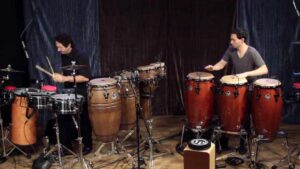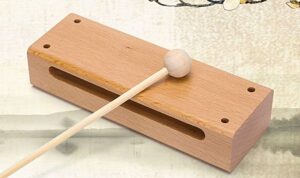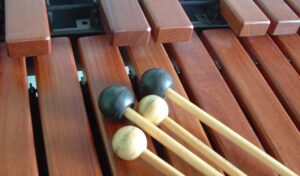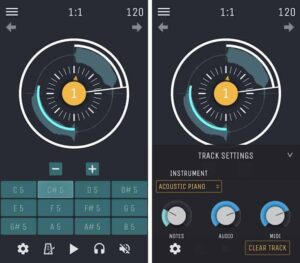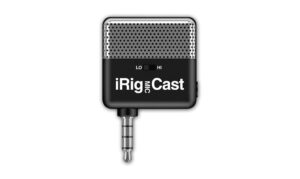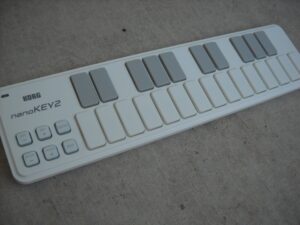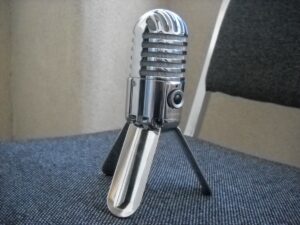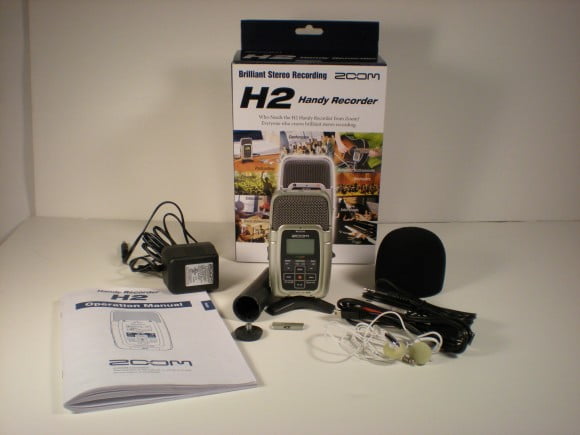
With music and computers being so eternally lip locked these days, it’s only practical to have every piece of sound gear be computer compatible. Zoom’s H2 Handy Recorder is just that and much more thanks to a plethora of features and superb sound reproduction. If you want to take your weekly podcast live, check the best streaming microphone too. Or, compare this with another high quality streaming microphone by reading our Samson Meteor Mic review.
The H2 is basically a portable microphone for a variety of different scenarios. From band rehearsal to podcasting to recording live music, the H2 is a veritable beast at best. Using 4 encapsulated microphones, the H2 provides a host of recording options that will satisfy many people. If you want a slightly less expensive microphone, take a look at our Samson GoMic review. Here’s a robust list of the H2’s features:
- W-XY mic patterns with 4 mic capsules and signal processing allows Front 90° cardioid, Rear 120° cardioid and 360° polar patterns
- Built-in USB 2.0 interface
- Records in WAV 96kHz/48kHz/44.1kHz at 16-bit or 24-bit, MP3 to 320kbps and Variable Bit Rate (VBR) data formats
- Time Stamp and Track Marker functions in Broadcast WAV Format (BWF)
- 512MB SD memory card included
- Accommodates up to 16GB SDHC memory cards
- Auto Gain Control (AGC) for pristine recordings
- Auto Start function means you’re always ready to record
- Low-cut filter eliminates wind noise
- On-board chromatic Guitar/Bass tuner
- Adjustable metronome with pre record count in
- Wind screen, mic clip adapter, desk mount, AC wall plug, earbuds, USB cable, and stereo Y cable included
Beyond all of the above listed features, there are even more ways to adjust and enhance your recordings through panning, compressors, and limiters. You can even use the mic as an audio interface and record directly into your computer for use with your favorite DAW, etc. I was baffled by all the things the H2 was capable of. A myriad of editing options were also available such as merging stereo files to mono, and 4 channels to stereo, etc. And speaking of great sounds, why not check out the five cool DJ gadgets inspired by the Electric Daisy Experience movie.
While all these features may seem daunting to the average consumer, the manual does a great job of dumbing it down and taking you through all the features step-by-step. The H2 has a small backlit 128×64 LCD screen that displays the current settings, options, and modes. The screen could use to be a tad bigger considering all that it displays and all that you will be doing with it. And if you love creating music, take a look at this review of how Humbeatz turns your voice into a musical instrument.
Navigating the interface could also be a little smoother. Not to say that it’s difficult, it can just take some time to get where you want to go. It is mildly intuitive, but it might be easier if the menus were partitioned or broken down a little further. The transport keys are small but react well to the tips of your fingers and feel nice to the touch. Naming files is easier on your computer than the H2, as scrolling through all the letters can be tedious. The actual face of the H2 reads small as well, but as you get familiar with the device it becomes second nature. As it is, you have to really delve into the small screen and explore all of the options and features as you can easily miss some stuff.
At only 4 ounces, the H2 is quite the featherweight. With that being said, sure it’s light and all, but it is the furthest thing from rugged. The first night I brought it out for some live music recording, the mic stand adapter and the SD card door broke with in the first hour. Easily the most disappointing and glaring aspect of the H2 is how chinsy it feels. Being that the nature of the H2 is sort of a bring me anywhere type of recorder it sure feels like shoddy manufacturing. It comes with this totally useless felt case that you wouldn’t put your cell phone in, let alone the H2. Fragile indeed, the H2 needs to not be thrown around but to be looked after with care. This problem though can be easily quelled through the use of a camera case or an airsoft gun case of some sort. You don’t wanna throw it in your bag haphazardly.
Despite the eggshell exterior, it’s inside the H2 that saves the day. The sound reproduction on the H2 is simply amazing. With no effects added, I was able to produce some truly quality recordings. Levels were easy to manage and the screen was accurate with no latency. Offering 90˚ and 120˚ cardioid (2 ch.) and 360˚ polar (4ch.) patterns, all the modes were easy to change and manage with in seconds. The H2 also runs on two AA batteries that promise 4 hours of continuous recording time. When available the H2 can also be powered by an AC wall plug. It would be nice if there was an internal rechargeable battery somewhere in there though.
When I was out in the field, I used the four channel mode to record my friend’s Dad’s “Goth Americana” band. I used the front two channels to record the band and the other two rear channels to record me and my buddy making jokes about the band. I then imported the files with no problems to my Mac via USB, and imported them seamlessly in to Pro Tools. If I had a surround sound encoder for my Mac it would have been possible to make a 5.1 Audio DVD of the show. That in itself is a huge selling point for the H2. The possibility of being able to record your own surround sound is really cool, especially for bands that maybe want to promote themselves a little differently. Even amateur video game designers could use H2 to their advantage.
I also used the H2 to record an acoustic guitar and ukulele. Both sounded crisp and round, and I incorporated the metronome in both recordings and used the count in feature. This is a great feature for singer-songwriter types and is found in most DAW’s. The metronome counts the beat in before it starts recording so you get a cleaner start to the recording. What also is nice for the acoustic musician is the tuner, which can be used chromatically or to find a certain note. It was very accurate and easy to use.
So from auto recording to file splitting and merging, making live track marks to files, normalization, and converting to MP3 on the fly, the H2 is a quality piece of gear that is fairly priced for the entry level consumer. Also of note, the H2 was compatible with the 4 Gig SDHC card, but no word on whether or not it will take a higher capacity though the packaging suggests it maxes out at 16 Gigs, SDHC non specified. While the H2 is a complete package, I would like to see such things as an XLR input, a scroll wheel, direct line in recording for electric bass and guitar, and a chargeable internal battery for the next iteration.
Though I have yet to review or experience any other portable digital recorder of this kind, it’s suffice to say that the H2 will be my blueprint to which future reviews of this type will be based upon. All Zoom needs to do is make the the casing way more rugged and ready for casual storage, and the H2 will be an essential tool for anybody looking for a quality recording device at a competitive price.
Pros:
- Near studio mic quality
- Vast amount of features and options
- Ideal for countless scenarios
Cons:
- Cheap toy quality construction
- Screen size and interface can be tedious
- Too many features for entry level user
Buy it here for $160!
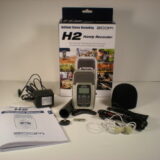
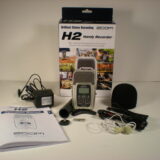
![3 Best Upright Basses in [year] 1 Best Upright Bass](https://www.gadgetreview.dev/wp-content/uploads/best-ipright-bass-300x169.jpg)
![7 Best Piano Keyboard Stickers in [year] 2 Best Piano Keyboard Stickers](https://www.gadgetreview.dev/wp-content/uploads/best-piano-keyboard-stickers-300x300.jpg)
![7 Best Record Storage Holders in [year] 3 7 Best Record Storage Holders in [year]](https://www.gadgetreview.dev/wp-content/uploads/best-record-storage-holder-300x230.jpg)
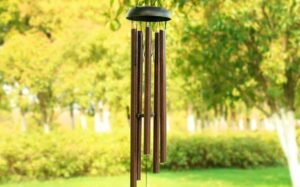
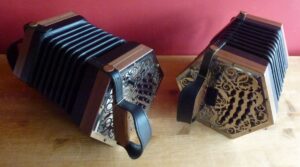
![Best Cowbell in [year] ([month] Reviews) 6 Best Cowbells](https://www.gadgetreview.dev/wp-content/uploads/best-cowbells-300x150.jpg)
![Best Djembe in [year] ([month] Reviews) 7 Best Djembes](https://www.gadgetreview.dev/wp-content/uploads/best-djembes-300x200.jpg)
![Best Dulcimer in [year] ([month] Reviews) 8 Best Dulcimer](https://www.gadgetreview.dev/wp-content/uploads/best-dulcimer-300x155.jpg)
